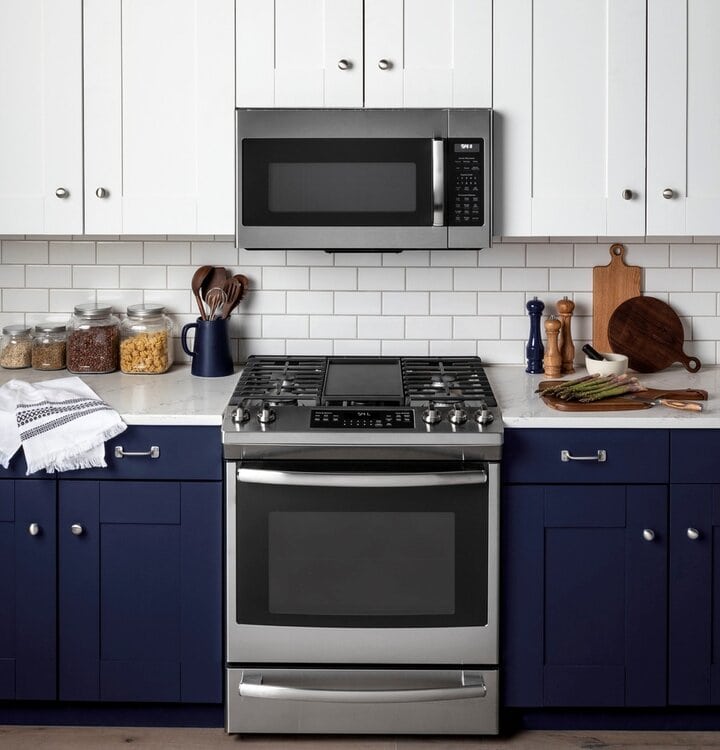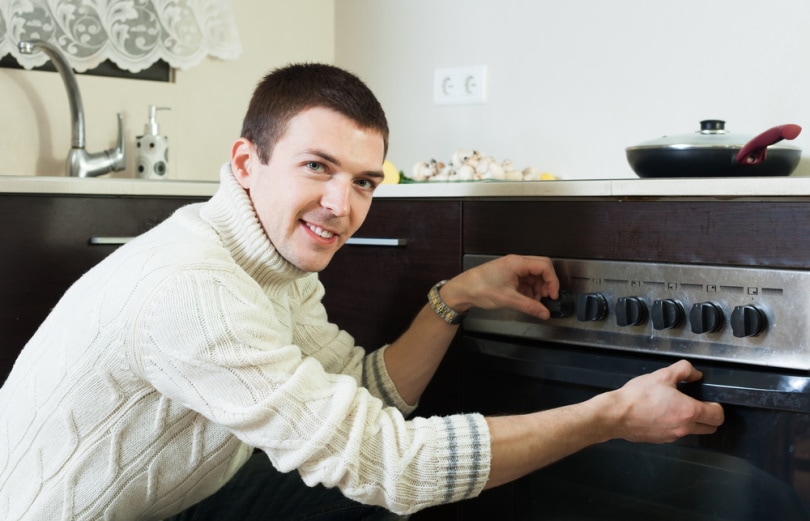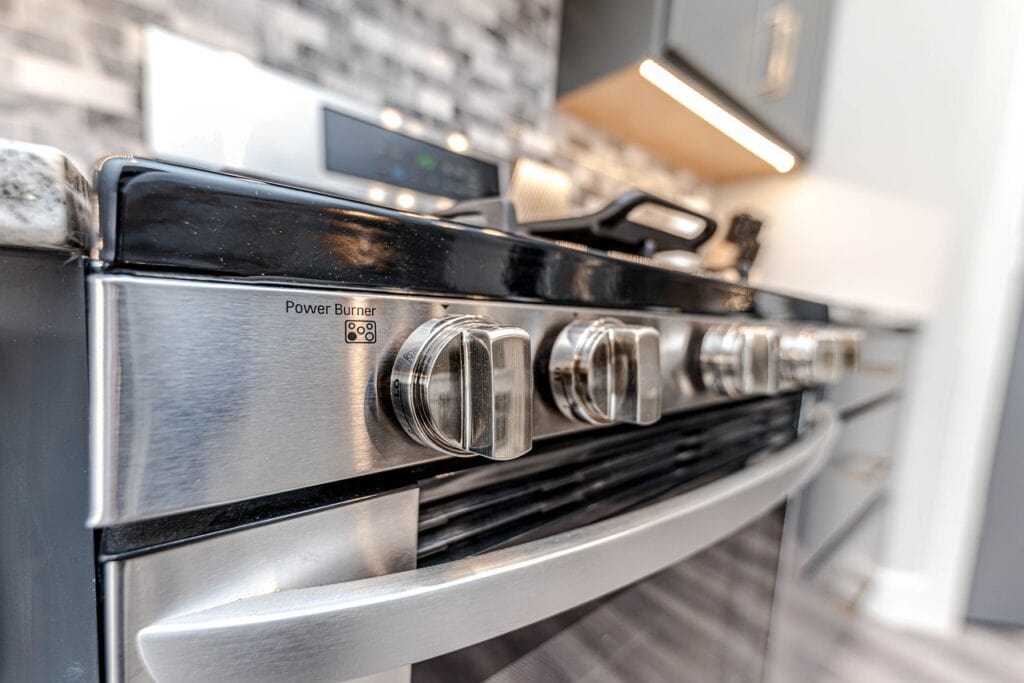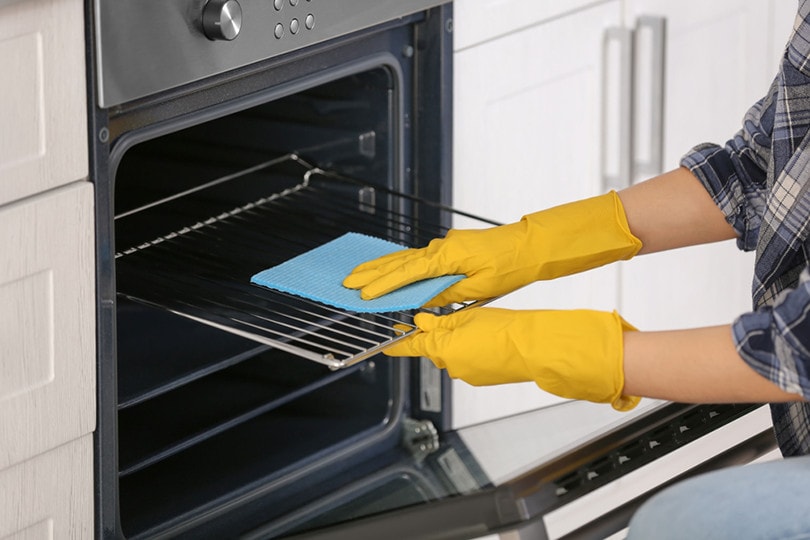How Do Self Cleaning Ovens Work? Different Types & FAQ
-

- Last updated:

Self-cleaning ovens sometimes sound and feel like magic. With just a few button presses, an oven can go from horribly dirty to sparkling clean. How can an oven clean itself with just the push of a button, especially when the task used to take hours of hard scrubbing? The answer to that question is actually quite simple. Self-cleaning ovens clean by using their heating elements to produce excessive amounts of heat that burn off any built up yuck inside of the oven. The exact mechanisms and processes will change based on the type of oven you have, but the underlying principle is the same.
Here is how self-cleaning ovens work and what the different types of self-cleaning ovens do on a regular basis.
How Does It Work?
Self-cleaning ovens work by heating themselves to extremely high temperatures. The heating process will break down any grime, old food, soot, or stains that might be lurking inside your oven. The high levels of heat are applied for long periods of time to really break down and burn away food and debris inside the oven. The high heat also works to sanitize the oven and kill any bacteria, mold, or viruses that could be growing on the surfaces.
The method of heat for your oven will depend on what kind of oven you have. Electric ovens and convection ovens will heat themselves using electric coils that start to glow red hot. Gas powered stoves will use natural gas to create the necessary heat to finish a self-cleaning cycle. Self-cleaning ovens can reach heat as high as 600 degrees F, with some ovens exceeding 800 degrees. These levels of heat will turn almost anything inside the oven into ash and smoke. The smoke will be seen coming out of your oven, so it is a good idea to keep the area well-ventilated. Watch for any signs of fire, but some heat, steam, and smoke are normal to be seen coming from your oven during an intense cleaning cycle.
What Are the Different Types of Self-Cleaning Ovens?

High Heat
The most basic and the most common type of self-cleaning oven is a high heat version. These ovens simply use extremely high levels of heat to clean themselves. As stated, ovens will reach heat levels between 500 and 900 degrees during their heating cycles. High heat is very easy to generate for an oven which is why this type of cycle is so common. The ovens will simply turn themselves to the highest heat they can generate. That exact heat level will depend on your exact oven and the type of heating element that it uses. However, this is not the only type of self-cleaning oven available for use.
Steam Clean
The other type of self-cleaning oven is a steam cleaner. These are less common than high heat cleaning ovens, but they are still effective. Steam cleaning requires you to get large chunks of food out of the oven before starting. Unlike the high heat models, steam cleaning ovens will not produce enough heat to burn away large chunks of leftover food. Steam cleaning ovens will only reach temperatures of about 400 to 450 degrees.
Steam cleaning ovens will say steam on them, so don’t worry about getting the two confused. These ovens also include a small reservoir in them that you must fill with water. Usually, the ovens use about one cup of water per cycle. The steam will fill the oven, and the combination of heat and moisture will loosen up any grime and cause it to fall to the bottom. When it is done, you might need to finish cleaning up the residue that is left over when the cycle has finished.
Where Are They Used?

Self-cleaning ovens can be found almost anywhere that ovens are found. Most modern ovens have a self-cleaning cycle built in. If you have an appliance that was built in the last twenty years, it likely has a self-cleaning setting for you to make use of.
Some commercial ovens also have self-cleaning abilities. That means that some ovens in restaurants and commercial kitchens will share the same capabilities as residential ovens. Not all commercial ovens have self-cleaning cycles, as the cleaning standards for commercial equipment and kitchens are much higher than those at home.
Advantages of Self-Cleaning Ovens
The biggest advantage of a self-cleaning oven is that it vastly reduces the amount of work you have to do to get your oven sparkling clean. Before self-cleaning ovens were invented, cleaning an oven was an arduous task that took a lot of time and elbow grease. People had to scrub the ovens out on their hands and knees, which was unpleasant and time consuming. This process saves time and effort to a very large extent.
Disadvantages of Self-Cleaning Ovens
The disadvantages of a self-cleaning oven are that it can be slightly dangerous. There is a small but present risk of fire whenever you run a self-cleaning cycle. If grease or large enough chunks of food are caught in the oven, they could ignite. This is very uncommon, but it is possible. Self-cleaning cycles also produce some amounts of foul-smelling smoke and steam that are a byproduct of the process. This is unpleasant and can trickle into the house if you do not have good ventilation in place.
Frequently Asked Questions (FAQ)

Can I Leave the House When My Oven Is Self-Cleaning?
No. You should not leave your house while your oven is self-cleaning. There is a small risk of a fire or excessive smoke when using the self-cleaning function, which can escalate into a dangerous situation if you are not home. It is best to stay nearby and keep an eye on your oven in case something goes wrong.
How Long Does a Self-Cleaning Cycle Take?
The length of a self-cleaning cycle will depend on your exact make and model. Typical self-cleaning cycles last between 1.5 and 4 hours. If you are curious, try to consult your oven’s user manual for more information about your exact self-cleaning function.

Do I Have to Clean My Oven After the Self Cleaner Is Finished?
Sometimes. Depending on how good of a job your oven does, you might need to finish cleaning by wiping the inside of the oven or scooping out any pieces of food that might be left behind after the cycle is complete. However, you will not have to scrub the oven after the self-cleaning cycle has finished.
Why Does the Door Lock When My Oven Is Self-Cleaning?
Due to the high levels of heat inside the oven, most ovens lock themselves during a cleaning cycle. This prevents you from letting the excessive heat out into your house. It also prevents people from accidentally (or purposefully) putting items into the oven when the heat is at dangerous levels.
Conclusion
Some people are afraid to use their self-cleaning cycles because they are afraid of what the process does. People should not be afraid to use the self-cleaning capabilities on their ovens. These processes are generally very safe, and they can save you a ton of time and hard work. They do produce a large amount of heat and should be used under general supervision, but they are very effective at what they do.
Featured Image Credit: Sergey yakubovskiy, Shutterstock
Contents



